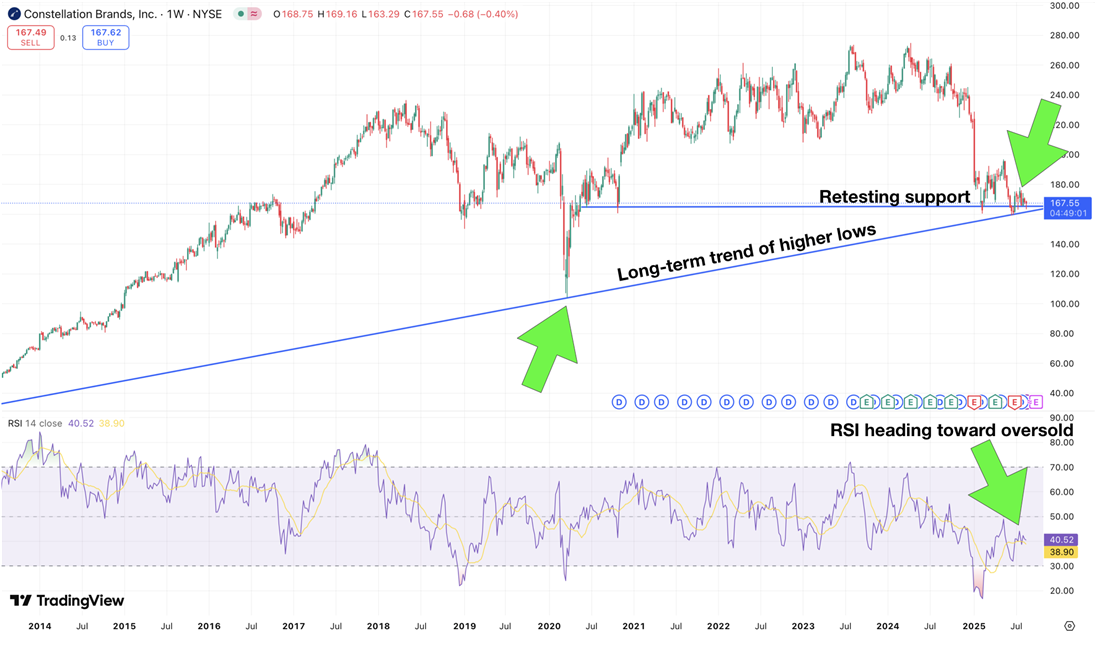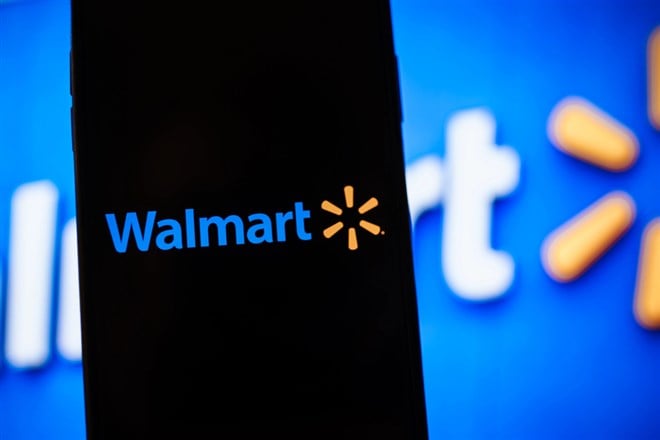Ticker Reports for August 22nd
Small Cap, Big Potential: 3 Tech Disruptors You Should Know About
Though information technology is among the top-performing sectors so far in 2025, the returns are anything but evenly distributed across the tech universe.
When many investors think of tech, they imagine the Magnificent Seven—the titans of the tech space, including Apple Inc. (NASDAQ: AAPL), Alphabet (NASDAQ: GOOG), and their ilk. But digging into performance, as a group, these mega-cap firms have performed about in line with the broader market year-to-date (YTD). For example, the Roundhill Magnificent Seven ETF (BATS: MAGS), an exchange-traded fund (ETF) tracking the performance of these seven firms, has returned 9.6% compared to 9.3% for the S&P 500 over that period.
For a fresh look at the tech space, consider much smaller disruptors like indie Semiconductor Inc. (NASDAQ: INDI), ACM Research Inc. (NASDAQ: ACMR), and Arteris Inc. (NASDAQ: AIP). Though only one of these companies has outperformed the Magnificent Seven YTD, all three have tremendous potential, analyst support, and significantly less investor attention.
indie Semiconductor: Quietly Leading the Automotive Chip Revolution
indie is a specialized semiconductor maker that caters specifically to the automotive industry. The small firm—it has a market cap under $1 billion—beat on revenue in the second quarter of the year as non-GAAP gross margin came in at 49.1% despite a difficult environment for automotive companies. The company's advanced driver assistance system (ADAS) software and components are highlights, as the firm is preparing to scale production of its 77 GHz radar chipset later this year.
At the same time, indie has also found success in photonics with its LXM laser, a product that could be transformational for the increasingly popular LiDAR technology often used in autonomous vehicles. The addressable market for this product alone could reach as high as $5 billion by 2030. The company has managed to do all this while also chipping away at quarterly losses, reducing operating expenses, and expanding its technological reach with the purchase of Emotion3D to broaden into the perception software licensing space.
With its strong intellectual property and positive relationships with original equipment manufacturers (OEM), it's no surprise that indie five out of six analysts covered by MarketBeat have given the stock a Buy rating. Though it remains unprofitable and is therefore on the riskier side, analysts see nearly 39% in upside potential.
ACM: Chip Equipment Innovator Anchored in China
ACM plays an important role in the chipmaking space for its single-wafer wet cleaning equipment. The company is in a unique position: it is based in the United States but increasingly conducts its business in China. While this does leave it vulnerable to the impacts of the ongoing trade war between these two nations, ACM has so far weathered the storm successfully. The company's revenue climbed by more than 6% year-over-year (YOY) to over $215 million for the latest quarter, beating predictions, on sales of its Ultra C WB wet bench tool.
The Chinese semiconductor space is growing rapidly, and ACM's product lineup is expanding to meet increased demand. The company will launch multiple new platforms and tools in the coming quarters, with the impact on revenue predicted to begin by 2026. In the latest earnings report, ACM even went so far as to nearly double its long-term revenue forecast for its Chinese business to $2.5 billion.
ACMR shares have climbed by almost 14% YTD, and with a consensus price target of $26.33, it seems analysts are anticipating further upside on the horizon. Though the company is not often reviewed by analysts, two out of three have assigned it a Buy rating.
Arteris: Powering the Backbone of AI Chips
Another semiconductor firm, Arteris is responsible for on-chip interconnect fabric technology used in interconnect applications. The company plays an often-overlooked but crucial role in the development of many AI and related chips. Although its business is high-margin and capitalizes on royalties, Arteris has long struggled with profitability and the path out of sustained losses is not entirely clear.
In its Q2 2025 earnings report, the company posted $16.5 million in revenue, which beat expectations. While it remains unprofitable, with a GAAP net loss of $9.13 million (or 22 cents per share), key performance indicators like Annual Contract Value and Remaining Performance Obligations rose by double digits YOY, signaling solid forward momentum.
For a very small firm—the market cap is under $400 million—Arteris has the potential to have an outsized impact on what is arguably the hottest industry globally. The company's low debt levels and compelling balance sheet also help it stand out. This may be why all three analysts rating AIP shares have given it a Buy rating, and why those analysts collectively expect shares to climb by nearly two-thirds.
A Trump Order Could Send This $7 Stock Soaring
A Trump Order Could Send This $7 Stock Soaring
Should You Join Buffett and Invest in Constellation Brands?
The consumer staples sector has entered the chat. Over the past five trading sessions, while tech sells off, the market’s been rotating away from growth and into defensive sectors, which were previously left out of the S&P 500’s recovery. In the past week, consumer staples (0.71%), real estate (1.16%), and healthcare (3.16%) have led the way.
Inflows into defensive sectors could raise questions about how firm this rally’s footing is. But it could also suggest that the rally has legs and now spans all sectors. Of course, if the former proves to be true, holding defensive names isn’t the worst place for your portfolio to be.
That’s exactly what we saw when Warren Buffett’s Berkshire Hathaway Stock (NYSE: BRK.B) Q2 13F filing was made public on Aug. 14. The form revealed that the firm expanded its position in Constellation Brands (NYSE: STZ), a global alcoholic beverage producer and distributor, bringing its total holding to 13.4 million shares.
Alcoholic Beverages Can Weather Most Storms
Having consumer staples join the ongoing rally isn’t necessarily an indication that investors should be looking to insulate their portfolios with all-weather positions (though that’s never bad advice). However, when it comes to the sector, its inelastic demand plays a role in both good and bad markets.
Constellation Brands’ marquee products—including Corona, Modelo, Kim Crawford, and Robert Mondavi—may not seem like staples. Try telling that to parents of young children. According to Grand View Research, the global alcoholic beverage industry was valued at $1.762 billion in 2024. It’s expected to reach $3.015 trillion by 2030, good for a compound annual growth rate (CAGR) of 9.7%.
Alcohol consumption may be marginally decreasing in the United States, but North America accounts for just 33.5% of the global market (and is still expected to undergo a CAGR of 9.3% from 2025 to 2030). Beyond staples like beer, wine, and spirits, Grand View Research notes rising demand for “affordable, value-added hard seltzer types.” The hard seltzer market alone is projected to grow at a CAGR of 15.8% from 2025 to 2030. Additionally, the consultancy firm finds “increasing demand for artisanal spirits in developing markets like China and India,” the two most populous countries on Earth.
So it’s unsurprising that Berkshire Hathaway has been significantly increasing its stake in Constellation Brands. In Q1, it added 12 million shares, more than doubling its position. That move made the Buffett-led firm’s position approximately 6.6% of STZ’s entire market cap. Then in Q2, Berkshire again increased its stake by 11.6%. That translated into 1.39 million additional shares, bringing its total holding to 13.4 million shares valued at $2.210 billion.
What About Constellation Brands Caught Buffett’s Eye?
Buffett is synonymous with value investing, and that’s what Constellation Brands is currently offering investors. The stock is down 26% YTD, but until recently, it traded in a range between $208 and $272 from December 2020 to December 2024 while continuing to reward shareholders with a growing dividend.
A quick note on that dividend: Constellation Brands has increased its payout for nine consecutive years, with a five-year average growth rate of 6.00% and an average 10-year growth rate of 13.67%. So even when the stock is underperforming, it pays shareholders to be patient.
And underperformance is likely what Buffett saw in STZ. After falling out of that trading range last December, the stock’s down more than 31%. At the same time, it’s exhibited healthy financials while remaining a favorite among smart money. Institutional ownership stands at 77.34%.
When Constellation Brands reported its FY 2026 Q1 earnings on July 1, it announced consolidated net income of $523.8 million following a loss of $370.6 million in Q4 2025—a strong indication of operational improvements. The company’s PP&E investments for the quarter were $192.8 million, suggesting long-term growth. Meanwhile, free cash flow increased from $879.7 million in FY 2018 to $1.973 billion in FY 2025, good for an increase of 124.28%.
The stock’s currently trading at an incredibly cheap forward P/E multiple of 13.00.
A Favorable Technical Setup
Beyond sound financials, Constellation Brands is showing a promising technical setup. Relative Strength Index (RSI) currently reads 39.03 and continues trending towards oversold territory. Meanwhile, the stock is testing support in the $164 area, where it meets a long-term uptrend demonstrating higher lows:

If STZ can bounce from that support, it could run up to resistance around $194, implying 18.29% potential upside in the near term. Longer term, Wall Street looks even more bullish. Twenty-four analysts assign an average 12-month price target of $213.74, or nearly 30% higher than where the stock trades today.
Man Who Called Nvidia at $1.10 Says Buy This Now...
Man Who Called Nvidia at $1.10 Says Buy This Now...
After Earnings Miss, Walmart Is Still a Top Consumer Staples Play
American-made goliath Walmart (NYSE: WMT) has indisputably become the world’s most valuable stock in the consumer staples sector. As of the August 21 close, Walmart shares have delivered a total return of approximately 141% over the last five years, achieving a market capitalization of nearly $782 billion.
However, Amazon.com (NASDAQ: AMZN) is ramping up its competition against Walmart, putting the continuation of the company’s dominance in question. Walmart also just missed on earnings. Below, we’ll dive into Walmart's latest financial results released on August 21 and analyze the competition between these two firms. Ultimately, is Walmart still one of the best plays in consumer staples?
Why Walmart’s EPS “Miss” Is Overblown
In its fiscal 2026 Q2, Walmart delivered revenues of around $177 billion, equating to a growth rate of 4.8%. Due to Walmart’s international footprint, this figure was negatively impacted by $1.5 billion in currency headwinds. Walmart puts its constant currency growth rate at 5.6%. Overall, these figures beat Wall Street estimates.
However, the company missed adjusted earnings per share (EPS), which came in at 68 cents. This was approximately 6 cents lower than expected. Shares fell by 4.5% after the earnings release.
However, this EPS miss was almost fully accounted for by a $450 million increase in the company’s expected costs for general liability and workers' compensation claims. Although the number of claims is falling, the cost to resolve each one is increasing. As a result, the company is now setting aside more money to pay these claims going forward. Although this is certainly not a positive, it is not likely to be a recurring issue. This makes the company’s earnings “miss” not overly concerning. Walmart boosted its guidance on multiple fronts as a positive sign for investors.
The firm now expects constant currency net sales growth of between 3.75% and 4.75% for the full fiscal year, up substantially from a range of 3% to 4% previously. Walmart also increased the midpoint of its full fiscal year adjusted EPS guidance to $2.57, up from $2.55 before.
The company's boost in full-year EPS guidance signals that it expected the accrual charge at some point during fiscal 2026. Raising this guidance despite the Q2 miss suggests that the company’s expectations are rising even in the face of headwinds.
Underlying Metrics and Growth Drivers Deliver
One of Walmart’s most important underlying metrics is U.S. comparable sales growth. This figure came in at 4.6%, a solid acceleration from 4.2% a year ago. Additionally, the firm’s U.S. eCommerce sales increased by 26%, a solid acceleration from 22% a quarter ago. Walmart’s global advertising business grew impressively by 46%, a moderate deceleration from 50% last quarter. Lastly, the company’s membership fees growth held steady at 15%.
These fees refer to subscriptions to Walmart’s Walmart+ service, which includes perks like same-day delivery and fuel discounts. Walmart+ is Walmart’s answer to Amazon Prime. The firm’s advertising and membership businesses are particularly important as investors consider this stock's future.
They are higher-margin revenue sources, allowing Walmart to increase the profitability of the overall business as they become larger components.
Still, Amazon is certainly fierce competition for Walmart. In Q1, Amazon said it achieved more than $100 billion in U.S. grocery sales in the prior year. That figure notably excludes its Whole Foods and Amazon Fresh businesses.
The firm is ramping up its efforts even more, recently adding a same-day delivery service for perishable groceries. Still, industry experts note that there is a significant “trust chasm” when it comes to consumers buying fresh groceries from Amazon.
Overall, investors will have to wait and see if this offering truly catches on. In the meantime, Walmart continues to take market share.
Walmart Strong Q2 Keeps Bullish Outlook Alive
Walmart’s forward price-to-earnings (P/E) ratio has ballooned to around 37x. However, the strong growth of its emerging higher-margin revenue drivers plays a huge role in this.
Overall, with the company’s ability to keep finding new ways to grow, the stock continues to look like one of the best plays in consumer staples. However, the progress of Amazon’s new offering does need to be closely monitored. Signs that it is putting significant dents in Walmart’s market share would be worrisome.
Amazon's big Bitcoin embarrassment
Amazon's big Bitcoin embarrassment







0 Response to "🌟 Small Cap, Big Potential: 3 Tech Disruptors You Should Know About"
Post a Comment